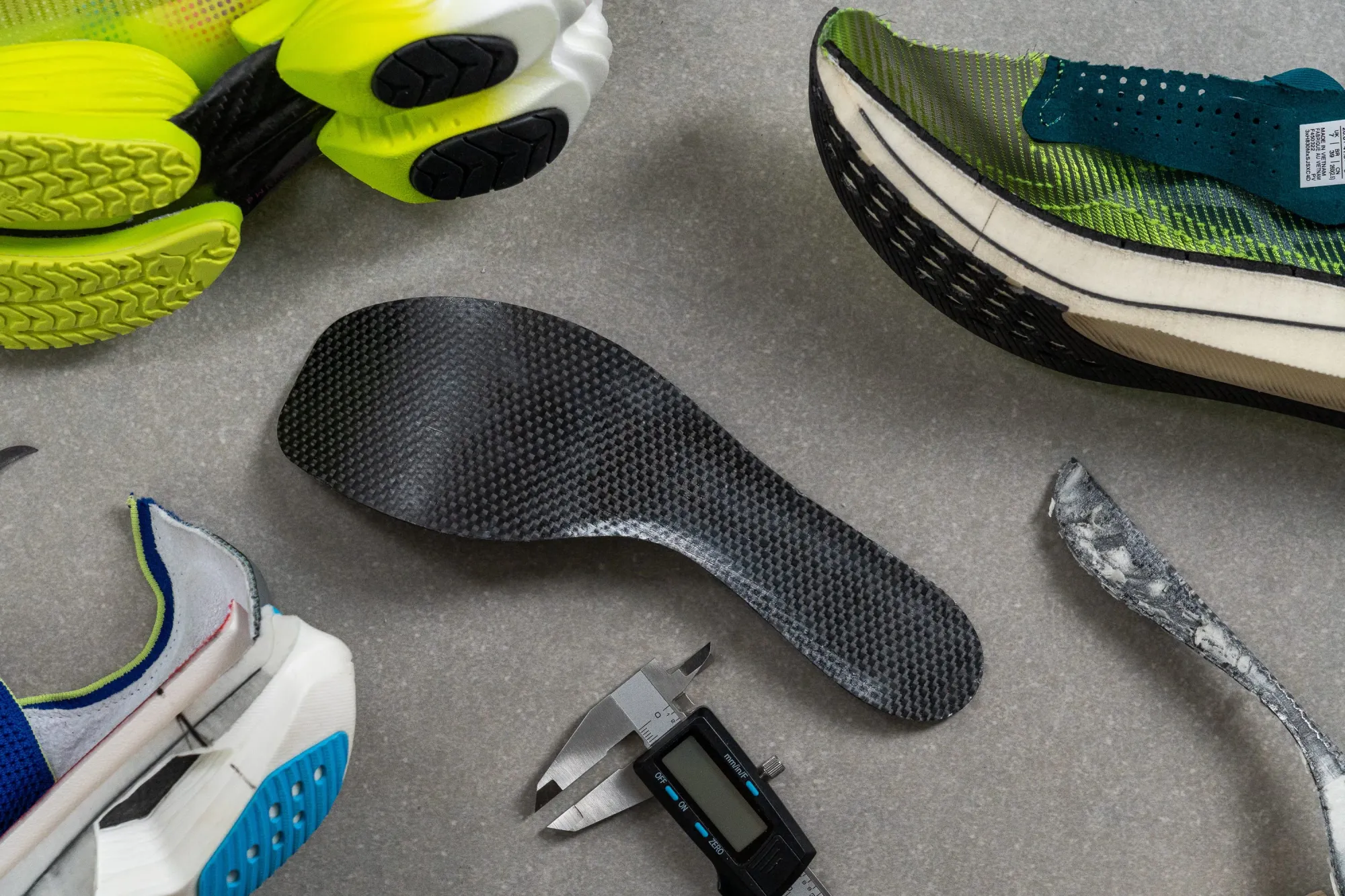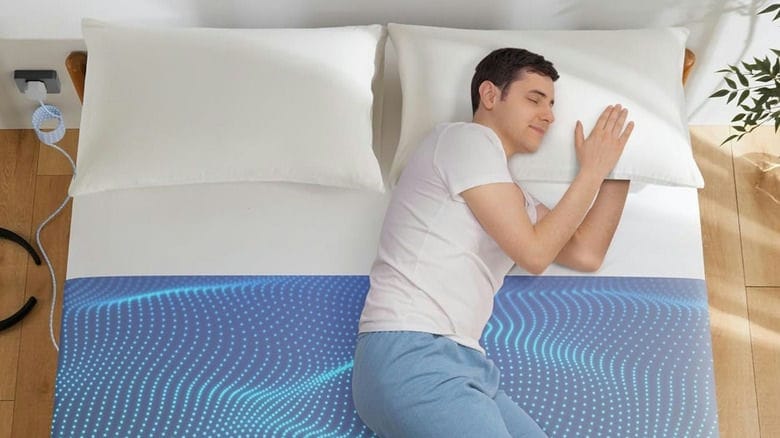Carbon‑plated shoes feature a thin, curved carbon‑fiber plate sandwiched between layers of advanced midsole foam. Originally designed to propel elite marathoners to record times, the plate functions as a spring, storing and returning energy during toe‑off. Combined with high‑energy‑return foams (e.g., Pebax‑based), these shoes reduce the metabolic cost of running at fixed speeds, fundamentally altering running biomechanics. From the Nike Vaporfly to subsequent releases across multiple brands, carbon‑plate technology has become synonymous with peak performance and efficiency.
Market Drivers and Growth
The phenomenal performance gains showcased in major marathons catalyzed consumer demand, prompting established brands and new entrants to launch carbon‑plated lines. In 2023, the global carbon‑plate running‑shoe market was valued at USD 12.19 billion, with a compound annual growth rate (CAGR) of 3.68 percent projected through 2032. High‑end specialty retailers report that plated models now constitute roughly 30 percent of premium running‑shoe sales. Meanwhile, the broader “sneaker” market segment incorporating carbon plates reached USD 1.2 billion in 2023, driven by lifestyle adaptations and athlete endorsements.
Biomechanical and Health Benefits
- Improved Running Economy: Controlled trials demonstrate oxygen‑consumption reductions of 2.7–4.2 percent at moderate racing paces, enabling athletes to sustain speed with lower physiological strain.
- Reduced Muscular Fatigue: The plate’s stiffness offloads eccentric muscle work in the calves and foot intrinsics, translating to less post‑run soreness and faster recovery between sessions.
- Enhanced Propulsion: By limiting midsole flexion, carbon plates act as a lever, increasing ground‑reaction forces during push‑off and supporting more efficient turnover.
Collectively, these effects can improve marathon times by one to two minutes for well‑trained runners and make speed workouts feel more manageable for recreational athletes.
Risks, Criticisms, and Open Questions
- Altered Load Patterns: Stiffer soles shift stresses proximally, with case series reporting navicular and metatarsal stresses in competitive runners who transitioned abruptly.
- Bone‑Stress Injuries: Bone‑stress injuries, including navicular fractures, have emerged in small cohorts, underscoring the need for conditioning.
- Variable Efficacy: Novel comparisons find that some off‑brand carbon‑plated models offer marginal or no statistically significant improvements over traditional racing flats, particularly for slower paces or non‑elite biomechanics.
- Durability & Cost: With price tags often exceeding USD 250 and performance degradation after 200–300 miles, cost‑effectiveness for casual runners is questionable.
These concerns highlight gaps in long‑term, population‑wide studies and suggest that benefits may be most pronounced in specific runner profiles.
Best Practices for Safe Integration
- Phased Introduction: Begin with short, easy runs (2–5 km) before attempting threshold or interval workouts.
- Cross‑Training & Strengthening: Incorporate calf raises, foot‑intrinsic exercises, and hip stabilizers to build resilience against increased lever forces.
- Mileage Management: Limit carbon‑plate mileage to 20–30 percent of total weekly distance initially, gradually ramping as comfort and tissue tolerance improve.
- Gait Assessment: Seek expert analysis to ensure that foot‑strike and stride mechanics complement the shoe’s stiffness, reducing aberrant load transfer.
Adhering to these guidelines maximizes performance gains while reducing injury risk associated with abrupt transitions.
Innovations and Future Outlook
- Hybrid Midsole Architectures: Brands are experimenting with segmented carbon rods and softer foam chambers to balance propulsion with natural flexibility.
- Custom‑Tuned Plates: 3D‑printing advances promise bespoke plate geometries tailored to individual gait data, promising more personalized biomechanics.
- Sustainable Materials: Pioneering efforts in bio‑composites (e.g., block‑co‑polymers fused with mycelium scaffolds) aim to deliver compostable or recyclable plates and foams without sacrificing performance.
- Beyond Road Running: Plate technology is expanding into trail, walk‑to‑run hybrids, and orthopedic footwear, potentially benefiting broader health populations beyond competitive runners.
These trajectories suggest that carbon‑plate technology will diffuse across performance, lifestyle, and medical orthotic markets in the coming decade.
Conclusion
Carbon‑plated shoes represent a watershed in footwear engineering, delivering quantifiable health and performance benefits when integrated thoughtfully. As research evolves and designs diversify—blending eco‑friendly materials with customizable biomechanics—these shoes will likely extend their reach from marathon podiums to everyday wellness regimens. Ultimately, informed, gradual adoption paired with strength conditioning is key to unlocking the promise of carbon‑plate technology while safeguarding long‑term musculoskeletal health.
References
- Wilson J. Effects of a Carbon-Plated Shoe on Running Economy at Slower Speeds. Int J Exercise Sci. 2020.
- Business Research Insights. Carbon Plate Running Shoes Market Size–Forecast to 2032. 2023.
- Dixon C. Bone Stress Injuries in Runners Using Carbon Fiber Plate Footwear. Curr Opin Sports Med. 2022.
- Smith J. The Future of Nike 3D Printed Shoes. LinkedIn. 2024.
- Allen R. A Comparison of Running Economy Across Seven Carbon-Plated Shoes. SFA Kinesiology. 2021.
- Chen L. The Best Carbon Plate Running Shoes 2025. The Run Testers. 2023.
- Johnson P. Why Carbon-Plated Running Shoes Can Lead to Injury. Outside Online. 2023.
- QYResearch. Global Carbon Plate Running Shoes Market Research Report 2025.
- Live Science. Can Carbon-Plated Running Shoes Cause Injury? 2022.
- Dataintelo. Carbon Plated Sneakers Market Outlook 2025–2032. 2024.
- The Influence of Running Shoe with Different Carbon-Fiber Plate Shapes on Lower Limb Biomechanics. ScienceDirect. 2023.
- Effects of Different Carbon-Fiber Plate Shapes in Shoes on Lower Limb Joint Moments. PMC. 2025.
- Run Faster and Save the Planet with 3D-Printed Shoes. Engineering.com. 2021.
- Schwaar C. 3D Printing Meets the Billion-Dollar Footwear Industry. Forbes. 2023.
- Taylor M. Pale, Porous and 3D-Printed: Inside the Quest to Make Compostable Shoes. The Guardian. 2024.













